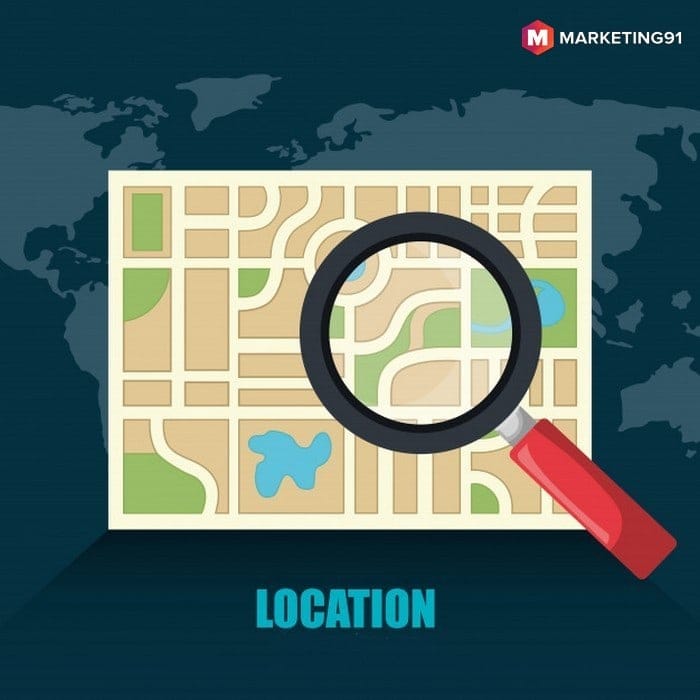Departmentalization is defined as a process that groups activities into different departments. These departments are created so that tasks can be performed by specialization within the organization. You will find it in both private and public organizations.
Departmentalize also refers to an organization’s formal structure that includes several departments and positions and their respective relationship with each other.
Table of Contents
What is Departmentalization?
To achieve the common goal of an organization, the company combines teams under different departments. These have several employees who carry out a similar type of activities for the betterment of their company.
It groups individuals as per the functions and activities they will be performing in a single department. If you see a corporate ladder, you will find that all the levels that come under the top and all the subsequent ones have been departmentalized.
Have you ever wondered how companies are structured to maximize efficiency and accountability?
Recent industry insights reveal that more than 65% of Fortune 500 companies implement some form of functional departmentalization, according to a study by Deloitte released in August 2023. This approach helps align specialized skills within departments, allowing companies to enhance operational efficiency and streamline strategic initiatives effectively.
For businesses looking to improve their organizational structure, one practical tip is to consider integrating digital tools like Asana or Slack to facilitate better internal communication and project management. These tools support cross-departmental collaboration by keeping teams connected and projects on track. As highlighted in a 2023 report by Gartner, organizations that utilized these platforms saw up to a 20% increase in productivity, showcasing the benefits of leveraging technology in departmentalization efforts.
The departments are headed by senior executives who are also known as managers in some cases of their department. They are responsible for delegating duties and tasks to the employees in their department.
The employees of every department are accountable to their department head for their performance.
5 Objectives of departmentalization

The objectives of departmentalization are as follows-
- Maintaining control
- Simplifying the operational process in the company
- Grouping the specialized activities under one umbrella
- Increasing the efficiency of management and ultimately the organization
- Fixing responsibilities and of course accountability
Examples of departmentalization
ABC Company is a multinational Company with its offices in the United States and India. It has created several departments because of the different geographical locations and because it needs to carry out systematic and specific work functions.
These are examples of Geographical Departmentalization and Functional Departmentalization, respectively.
Types of departmentalization
Some popular types of departmentalization are as follows-
#1. Functional departmentalization
In this kind of departmentalization, the company creates departments based on the functions; they perform for the company. For example, you will head together all the specialists related to finance under a finance department and with marketing under that department and not vice-versa.
Functional departmentalization is beneficial for the company as it integrates expertise and maximizes efficiency and productivity. As all related activities are conducted by a group of like-minded and shared knowledge and skilled people in one place, you can expect specialized activities and great results.
Some of the common and popular functional departments are Logistics, finance, manufacturing, accounting, marketing, IT, and human resource. All important positions are filled with experts that facilitate better integration and coordination.
#2. Geographic departmentalize
When a company organizes departments along geographic lines, it is called geographic departmentalization. Multinational firms have their offices all around the world, and they have created departments based on the regions to handle company activities.
The geographical departmentalization ensures that a cultural, social, and political need of the region is met. When managers are sent from one location to another, they also gain expert training to handle different scenarios.
This type of departmentalization allows the company to benefit from the low cost of operations as they can easily capitalize on the local conditions as per their requirements.
#3. Product departmentalize
This type of departmentalization is perfect for a large-scale company that deals with multi-products. It groups all the activities related to the delivery and development of products in a specific department.
Product departmentalization becomes vital when manufacturing, marketing, and handling of each product hold due significance for the company. It gives full onus to every product and ensures specialized production facilities.
#4. Process departmentalize
When a company groups activities by the production processes, it is known as Process Departmentalization. The departments will need adequate material and manpower to conduct their operations and tasks smoothly.
#5. Customer departmentalization
When a company puts its focus on customer needs and wants, it creates departments in accordance with different class or type of clients and customers. This is known as customer departmentalization.
It pays attention to customer satisfaction to enhance the sales figure and brand image of a company.
#6. Divisional departmentalize
When a corporation starts independent lines that operate as separate entities, it is known as divisional departmentalization.
#7. Matrix departmentalize
This type of departmentalization integrates project and functional departmentalization to improve economies of scale.
#8. Planning Task Force
This type of departmentalization is created in extreme conditions when the organization needs to address a particular and special circumstance. For example, if there is a sudden natural disaster in your area the company will create a special task force department to handle the related.
Here is a video by Marketing91 on Departmentalization.
Advantages of using it
The numerous advantages of departmentalization are as follows-
- Departmentalization is an effective grouping that enables meaningful work
- It is easy to coordinate different work in the same department
- Departmentalization results in the integration of work
- Achieves economic advantage
- Departmentalization enables utilization of local conditions via low operational costs
- Simplifies training
- Utilizes special skills and specialized training to increase personal as well as company productivity
- Departmentalization helps the company to gain the benefit of specialization
- There is a feeling of autonomy as the manager is granted the power to take independent decisions
- It increases the chance of growth and expansion
- Departments are created to fix the role of every person involved. Responsibilities are clear and precise, and every person is now accountable for his/her action
- All departments are specific, and workers within it have a greater chance of uplifting and further learning of the skills. It actually acts as on-the-job training. If the manager comes across someone in his group who he thinks to need specialized training, he can easily arrange for it.
- It becomes easy to evaluate managerial performance as tasks are allotted department wise.
- Departmentalization results in better administrative control.
Disadvantages of departmentalization
The disadvantages of departmentalization are as follows-
- As departments continue to grow it creates less adaptability within the organization
- When a company groups activities and people in one specific department there is little room for flexibility
- Difficulty in coordination between different departments
- Less responsibility and accountability as the departments are concerned with their own space and not the company as a whole.
- Too much emphasis on specialization
- Rising conflicts between different departments
Factors to be considered in departmentalization
An organization encourages departmentalization to increase its efficiency and productivity. The factors that are considered to create suitable departments are as follows-
#1. Specialization
Specialization helps the workers to become experts in their field so that it can maximize efficiency. It is important to group employees and activities in such a way that it can result in work specialization and thus ensure economy of operations.
#2. Control
Effective control will help a company to achieve the objectives of a company inefficient and economic Create departments in such a way that timely action can be taken to ensure optimal performance.
#3. Co-ordination
Several activities are in urgent need of coordination and should be grouped together in one department
#4. Proper Attention
Proper attention is an important factor in creating departments. It ensures special attention to vital areas and no duplication of any activities
#5. Human Consideration
Departments should be created after giving emphasis to human consideration like aspiration, attitude and cultural pattern of the employees
#6. Local Condition
Attention to local conditions and make adjustments as per the available resources is important before creating necessary departments. The conditions of geographical areas vary from one to another hence be aware of local conditions beforehand.
#7. Economy
When you create separate departments, it increases the cost of a company in terms of personnel, equipment, and additional space. The number one priority of an organization is to utilize its physical amenities to achieve maximum economy while creating necessary departments.
Liked this post? Check out the complete series on Management


I’ve enjoyed your writing of Petronas oil and gas. In Malaysia. The company makes everything look wonderful!. But it’s not. I know for a fact if a employee has problems and company don’t like it, you go to there jail. Jail there is a terrible place. There is a lot of Money changes hands with jail officers. Petronas turns there heads on this and there employees. One employee that is half dead do to heart attack and now lung problems and other is do to working at oil rig. Doctors have told Petronas he must go home back to Buffalo New York. This man is dieing. There is many others. But this company has no heart. If you talk you go to jail. They do not care. It’s sad. It’s only money they care about. I beg you sir, look really into this. My friend is Patrick Lukas. And many others. Please I beg you or if you know who can please pass this on ASAP. He is still in hospital, it’s been many times heart attacks, lungs, stomach- spits out blood. But Petronas doesn’t care, if you can’t finish job due to sickness, you can die they do not care. Patrick was told if not better you will be sharks ? food!! Wondering how many people that have done this too? ??. Please help get him home for the medical treatments he needs before he dies. I beg you. I’m just a friend. Both parents are dead. His wife died 9 years ago. He has nothing and no one. If he dies and or become shark food NO ONE will ever know. ???.